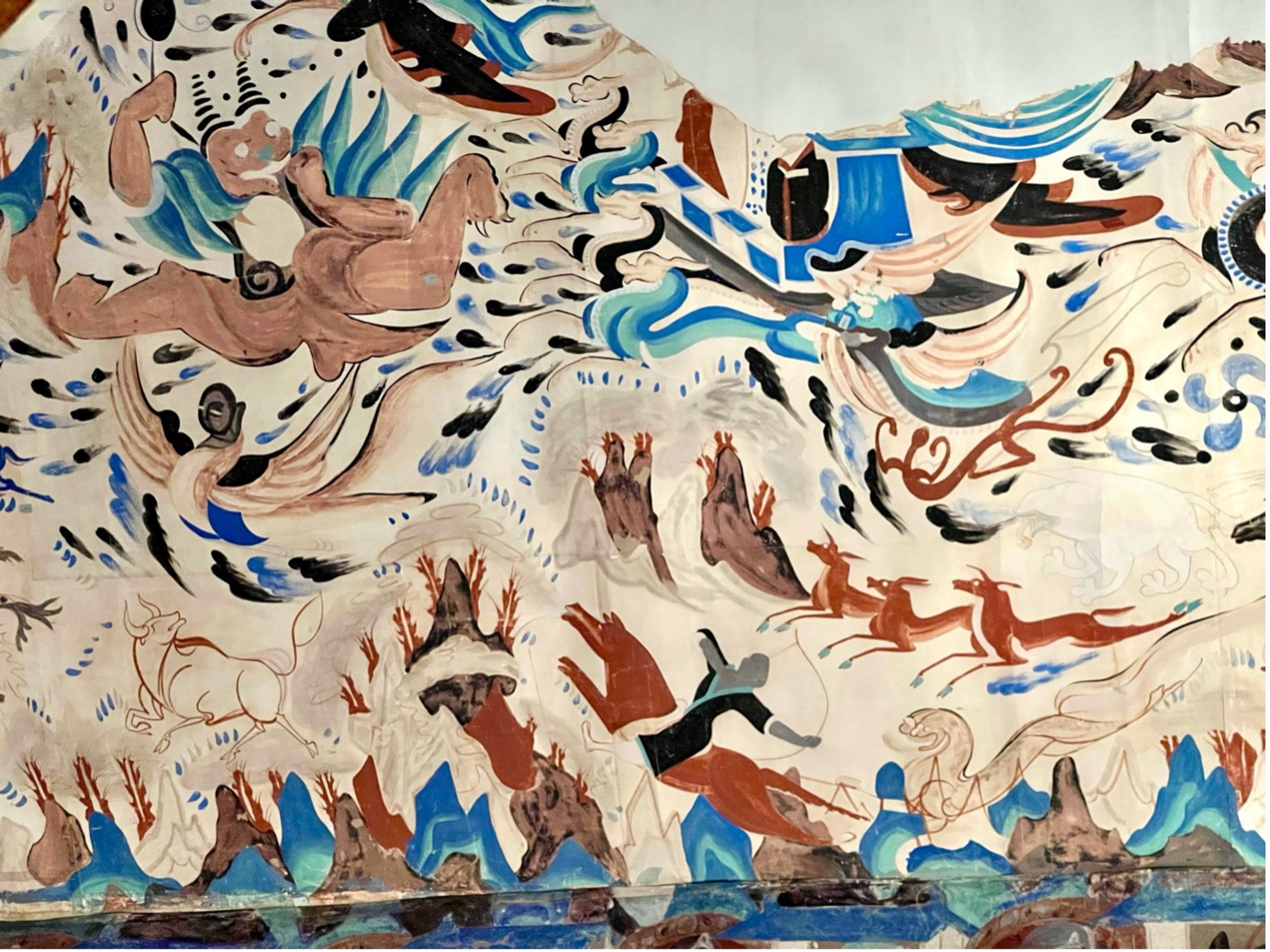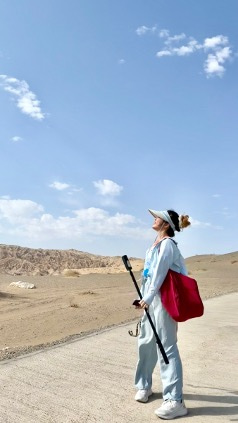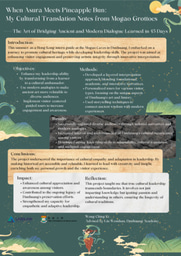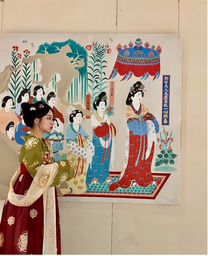【LiA】Week 6: From Guardian to Heir—The Ultimate Practice of Cultural Leadership

- Leadership Awakening in Farewell
This week marked my transition from learner to Successor. When the new intern became nervous and forgot her lines in front of Cave 249, I did not immediately take over the explanation. Instead, I quietly asked her, “Among the animals in this hunting scene, which one most resembles your current state of anxiety?” — This probing question later became known to her as the “key to unlocking confidence.”

〈Cave 249: Hunting in the Mountain Forest〉
During my final tour, I paused before the Library Cave: “These manuscripts have been away from Dunhuang for about 120 years, but each research study continues their legacy. Just as our encounter here will become the ‘Dunhuang seeds’ in your memories.” An elderly man suddenly wiped away tears, and at that moment, I truly understood my mentor's teachings: true inheritance is not about holding on, but about igniting.
Though it was hard to part with my mentor, teammates, and this oasis in the Gobi Desert, I knew: farewell is not the end. The observational skills, adaptability, and cultural translation abilities Dunhuang imparted will resonate throughout my career — like the “self-playing” (不鼓自鳴) instruments in the murals.

- Historical Insights: Modern Metaphors from the Tibetan Period
When I am leading a tour in Cave 237, I deliberately contrasted the relationship between Tibetan warriors and Dunhuang artisans:
“Swords can conquer land, but beauty can conquer time—these murals turned conquerors into the conquered.” A visitor commented: “It turns out that cultural soft power is the ultimate weapon.”
History illuminates reality:
The Tubo ruled Dunhuang for 66 years but were ultimately assimilated by Buddhist art. This offers a lesson for the globalized era today: true cultural confidence does not lie in rejecting differences but in embracing diverse cultures as nourishment for one's own. Just as the “eclectic aesthetics” of the Mogao Caves blend Indian relief techniques with Central Plains line drawings, ultimately forging the unique Dunhuang style.

<The Nine-Story Temple in July 2025>
- The Art of Managing Children's Tour group
When encountering a group of lively young explorers:
- When a child points to a crack in the cave and shouts, “Let's excavate the Library Cave 2.0!” I respond:
① First, show empathy: “You have keen observation skills! If there were a 2.0 version, you'd be an archaeologist!”
② Then guide them: “But the real treasures are in these murals. Why don't we look for how ancient children played?” (Naturally transitioning to the “Sand Amassed Into Tower” mural in Cave 23)
③ Plant a seed: “Just like the children playing with sand in the painting, it's okay if you don't understand today. This seed will eventually sprout.”
This three-step strategy of “observation-acceptance-elevation” was later named the “Dunhuang Seedling Method” by the team.
This week's core breakthroughs
- Value output dimension: Elevating artistic phenomena to the level of civilizational dialogue (e.g., the Tibetan case)
- Essence of leadership: Extending influence by empowering others (e.g., the intern mentoring case)
- Philosophy of farewell: Replacing sentimental goodbyes with “cultural sowing”


〈Until We Meet Again, Dunhuang〉





Please sign in
If you are a registered user on Laidlaw Scholars Network, please sign in